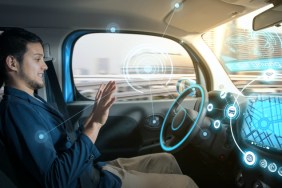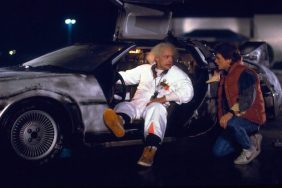In the midst of the Bluetooth speakers, the endless smartphone cases, the drones, 3D printing and wearable tech, CES 2015 in Las Vegas became a car show — an aggressive warmup for the North American International Auto Show following in Detroit just days later.
Amongst all of the in-car technology emerging from CES to make driving cars easier or more pleasant, it was science that would remove driving from our lives altogether that made the most noise.
Self-driving cars were a huge story before CES 2015 began and remained an international news item through the run of the world’s biggest technology show. But, while a car that drives itself is a sexy, futuristic idea that generates plenty of headlines and debate, few analysts and members of the public are really thinking through the probably of seeing such vehicles anywhere in the near future.
First of all, there doesn’t seem to be volumes of research indicating consumers want self-driving cars. In fact, published studies show today’s car owners don’t want them and even fear them. That doesn’t mean they wouldn’t eventually be accepted or successful. After his Model A and Model T cars revolutionized the world of transportation production and labor, legendary Henry Ford was famously quoted as saying, “If I’d have asked the people what they wanted, they’d have said ‘a faster horse.'”
Related: Las Vegas City Guide
So, on comes Audi with maybe the biggest CES stunt — a self-driving car heading to CES in Las Vegas from the Bay Area “on its own.” It did arrive and on time to ample fanfare. The trouble is that “Audi Self-Driving” system didn’t really get the car to Vegas entirely on its own. The A7 in question wasn’t gassed up, programmed and sent on its way. There was always a driver (in this case, a car journalist, aboard) with an Audi tech riding along. When the car got to within shouting distance of Vegas, a human took over.
I’m not saying that’s not a technical achievement Audi accomplished a significant, milestone task. That said, the fact that Audi reverted to human control when the demonic CES traffic approached highlights the primary problem with self-driving cars — the ugly truth that will keep them off our roads for a long time to come. It’s not that the technology won’t work. It’s not that automotive manufacturers lack the scientists who can make a self-driving car work. It’s not that our cities couldn’t evolve to house and utilize such vehicles.
The fact is no automaker is going to be that first one to let a car they brand and build out into public without a human driver — not in this era of endless big money litigation. If anything goes wrong with that car, or if anything happens to the driver inside, another driver sharing the road or to a pedestrian, it would be liability armageddon.
Instead of doing more than testing these self-piloting machines aggressively, Audi, BMW, Ford and the other automakers are easing into partial car control. For example, cars already park themselves for feeble drivers incapable of mastering that basic skill. Oncoming traffic jam modes will use sensors to slowly maneuver cars in stop and go jams. Collision avoidance systems will kick in only in immediately dangerous spots, cutting in the brakes. Such piecework introductions might get the public used to the idea of handing over their freedom of movement, but that legal cloud of potential disaster remains.
The whole idea of self driving cars really seems to be a big magic trick from the automakers to keep them in news headlines above and beyond the automotive pages. The rollouts of the latest makes and models will make the car news sites during NAIAS 2015, but techy stunts like would-be self-driving cars will jump up to page one. But, the actual arrival of such vehicles won’t be page one news for a long time.








